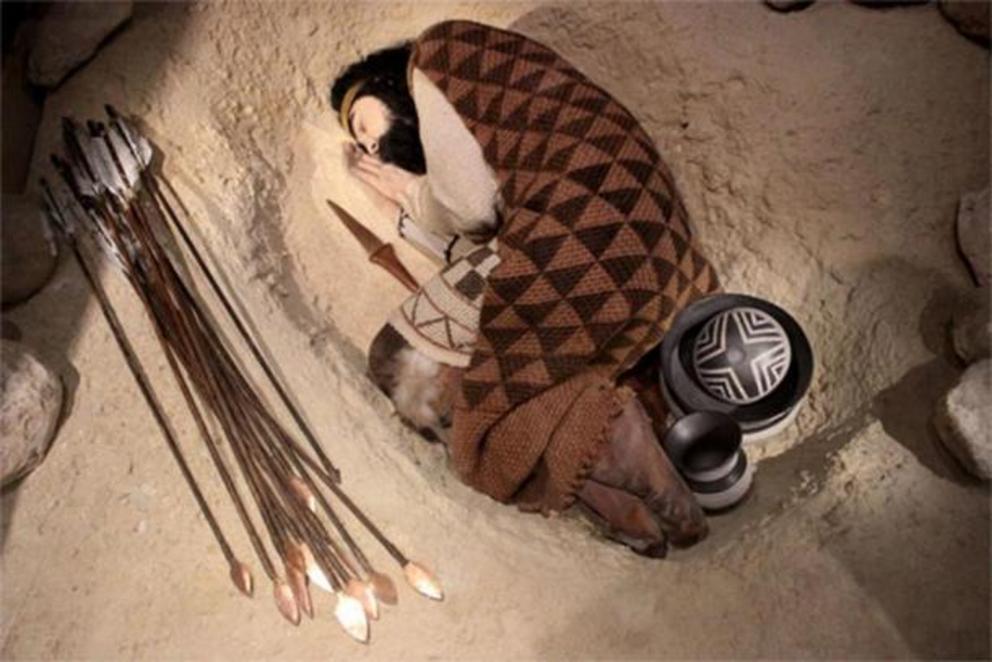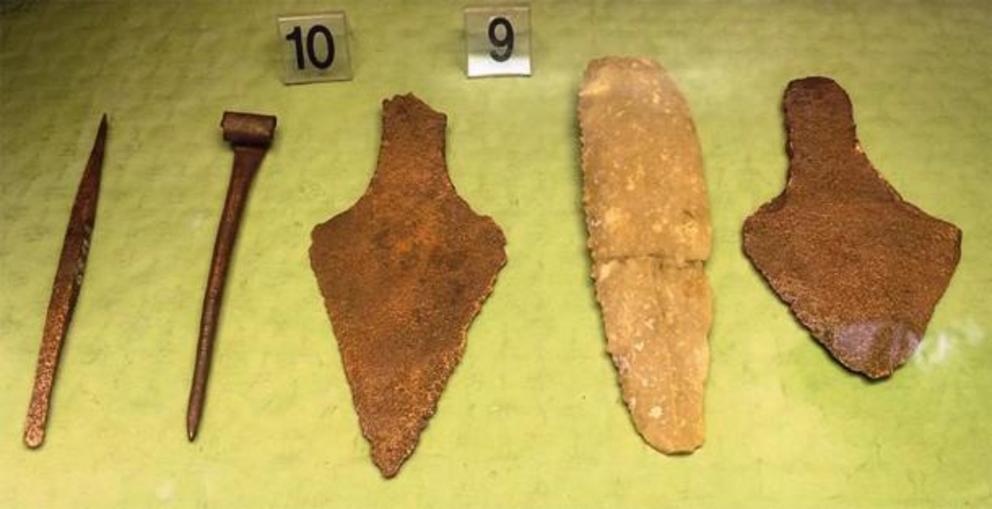Chieftain and seated companion illustrate complex prehistoric burial rituals
Prehistoric burial mound.
An elite prehistoric chieftain and possibly his older shaman have been discovered beside a sacred mound in southwest England’s most important prehistoric ritual center.
During a new archaeological excavation near Lechlade, in Gloucestershire, southwest England, the body of a probable “ Beaker People ” chieftain has been discovered by a team of scientists working with Foundations Archaeology . Located only 150 meters (493 foot) west of the kilometer (3280 foot) long “Cursus” monument, the burial is situated in one of southwest Britain ’s most important Neolithic ceremonial complexes that leads down to or towards the River Thames , with another major Neolithic ritual monument measuring 500 meters (1640 foot) long leading to the River Cole.
Interred around 2,200 BC, the man had died in his thirties or forties and he was discovered at the center of a bespoke funerary mound with a 20-meter (65 foot) diameter surrounded by a ditch enclosure (henge). Archaeologist Andy Hood of Foundations Archaeology told The Independent that the excavators found “dark staining” in the gravel surrounding the skeleton indicating that he had been buried in a wooden plank coffin, or possibly wrapped in animal skins.
 Reconstruction of a Beaker Burial, National Archaeological Museum of Spain, Madrid.
Reconstruction of a Beaker Burial, National Archaeological Museum of Spain, Madrid.
Valuable Wrist Guards And Sacred Cow Hides
The chieftain was buried with four cowhide rugs and 20 centimeter (eight inch) long copper dagger with a finely crafted whale bone pommel, which when tested was found to have been kept in a grass and leaf-lined leather scabbard. Other items included a flint knife and fire-lighting kit, an amber bead and an archer ’s wrist guard was found to have been made from a highly-valued stone that had been quarried near the top of a mountain in the Lake District.
The stone used in the wrist guard originated at Pike of Stickle (Harrison Stickle), a 709 meters (2,326 feet) mountain in the Lake District about 250 miles north of Lechlade. According to the 1958 book A Pictorial Guide to the Lakeland Fells, Pike of Stickle was “the most important neolithic stone axe factories in Europe” and the fine-grained greenish volcanic rock native to this mountain was difficult-to-access, which may have further enhanced the perceived sacred nature of the wrist guard adding greatly to its significance and power within the community.
 Stone knife and copper daggers -objects from Budapest area belonging to the Csepel culture, a Hungarian-Slovakian sub-style of the Bell-beaker culture, early Bronze Age. Display at the Budapest Historical Museum.
Stone knife and copper daggers -objects from Budapest area belonging to the Csepel culture, a Hungarian-Slovakian sub-style of the Bell-beaker culture, early Bronze Age. Display at the Budapest Historical Museum.
Archaeologists in England have excavated elite Bronze Age individuals in the past who had been buried with one or two cowhide rugs, but the presence of four in this burial indicated to archaeologists that he was a “very prestigious communal leader”. It is thought that each of the four rugs would have been an “impressive and valued possession” and the archaeologists describe them as having been made from the entire cowhide with its skull and hooves at its four corners.
Shaman’s Didn’t Die So Much As Transmute
Shadowing the archaeological importance of all the artifacts buried with the chieftain is what was discovered about 200 meters (650 foot) away. The Lechlade leader’s burial was oriented to the southeast looking towards a second interred man: an older man in his fifties or sixties who had been buried at, or immediately after, the chieftain. Alternatively to the chieftain, this man’s skeleton was sitting on an earth and gravel “seat” with his legs dangling in what would have been a shallow pit. This individual was buried without any elite grave goods, only a single cowhide rug, indicating that he was probably some sort of shaman or priest, but according to Christopher J Knüsel in his 2014 paper Crouching in fear: Terms of engagement for funerary remains “there is no accepted standardized lexicon in English to describe burials and the position of buried human remains,” so the true nature of the seated man will remain an archaeological mystery for the time being.
The earliest known seated burials were made in Karelia (in northwest Russia) and the Ukraine dating to 9,500 BC, and the earliest written reference to seated burials was made in India around 1,000 BC regarding holy men being buried in a cross-legged “lotus” position to enable their continuance to other realms in an eternal yogic state. Diana Gergova, of the Institute of Archaeology with Museum (Sofia) , Bulgaria, published the paper The eternity of the Burial Rite. The throne and the sitting Deceased describing seated burials in ancient Thrace (Bulgaria), and she says in Bronze Age Siberia archaeologists have discovered shamans buried “partially sitting up” and that the practice lasted up to early medieval times in France and Viking Scandinavia.
The Emergence Of “Church And State”
The seated burial at Lechlade appears to be part of “a very widespread series of traditions,” said the archaeologists, and that tradition is maybe a continuation from the 9,500 BC example found in northwest Russia because the Beaker culture originated in what is now south Russia and migrated westwards, arriving in Britain in around 2500 BC. The Beaker migrants were a highly mobile innovative band of warriors who brought copper metal-working technology to Britain and the Lechlade beaker chieftain, and the shaman, rose to power about 300 years after the culture arrived on the island.
They archaeologists say the pair of men attempted to “by in” to Britain ’s pre-Beaker heritage choosing burial plots at the heart of Britains’s ancient pre-Beaker agriculture, power and traditions in southern Britain. But what is another fascinating thought in all this is that already by 2000 BC communities were being administered, or ruled over, by the twin pillars of church and state, with the chieftain looking after social, hunting, military and economic affairs while the shaman got on with matters pertaining to agriculture and appeasing the gods.

